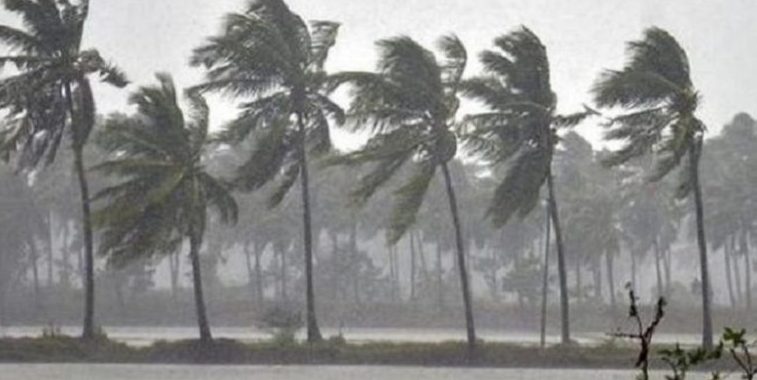Bhubaneswar: A fresh low pressure area is very likely to form over north Andaman Sea around October 10 and it is likely to become more marked and move towards south Odisha and north Coastal Andhra Pradesh, the IMD said Wednesday.
The IMD added that the low pressure area may turn into a cyclonic storm in the next three-four days.
In a bulletin, the India Meteorological Department said the low pressure area, after formation, is likely to become more marked and move west-north westwards towards south Odisha and north coastal Andhra Pradesh in 4-5 days.
If the storm takes shape it will be titled ‘Cyclone Jawad’, the IMD informed.
According to various models and local weather experts, another low pressure area will form around October 12 and after that both systems are likely to get merged and turn into a very severe cyclonic storm around October 14.
As per current estimation if the cyclone takes shape, it is likely to make landfall between south Odisha and north Andhra Pradesh around October 15 or 16.
The wind speed of the cyclone may be around 130 to 140 kmph, sources said. Under its impact, the districts of Ganjam, Gajapati, Koraput, Malkangiri, Rayagada, Nayagarh and Kandhamal will face high wind speeds and heavy rainfall.
If the situation turns bad, it will certainly dampen the festive spirit of the people as Dussehra is on October 16. However, the IMD has not made any specific prediction whether the system will finally take the shape of a cyclonic storm.
Bhubaneswar Meteorological Centre director HR Biswas said, “So far, our forecast says that a low pressure area is likely to be formed over north Andaman Sea around October 10.
The picture will be clear in the next three to four days. There are possibilities that the system will be more marked and intensify further.”
Similarly, local weather expert Sarat Sahu said the detailed forecast of the possible cyclone can only be known around October 10.
If the system converts into a cyclone, it would hit either Odisha or Andhra Pradesh coast and its intensity will be more than ‘Cyclone Gulab’. The low pressure area can turn into a severe to very severe cyclone, added Sahu.
Due to the present development, the withdrawal of south west monsoon from Odisha will be delayed.
Recently, cyclonic storm Gulab pummeled through north Andhra and south Odisha coast before making landfall near Srikakulam with a wind speed of 70 to 80 kmph gusting up to 90 kmph.
Several parts of south coastal and south Odisha suffered extensive damages to properties due to the storm. It should be stated here that cyclones in Odisha in the month of October have become a common affair for the past few years.
PNN
